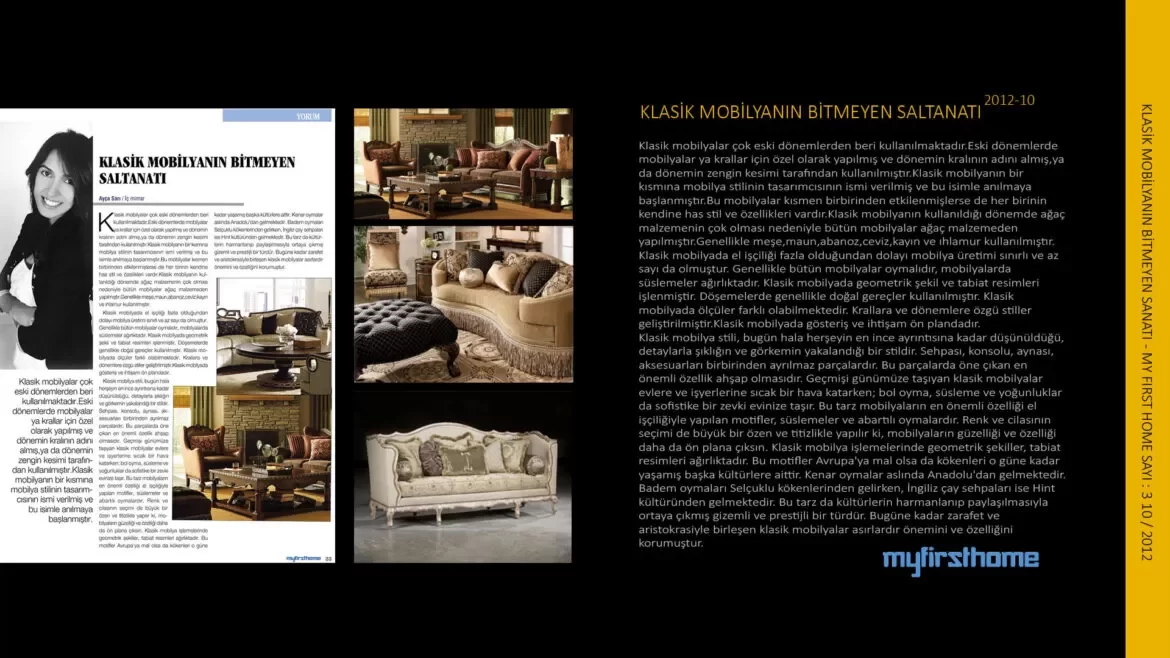Classical furniture has been used since ancient times. In the old times, the furniture was either specially made for the kings and named after the king of the period, or it was used by the wealthy people of the period. Some of the classical furniture was named after the designer of the furniture style and started to be called by this name. Although these furnitures are partially influenced by each other, each has its own style and characteristics. In the period when classical furniture was used, all furniture was made of wood, due to the abundance of wood material. Generally, oak, mahogany, ebony, walnut, beech and linden were used. Since there is a lot of hand work in classical furniture, furniture production has been limited and few. Generally, all furniture is carved, decorations are dominant in furniture. Geometric shapes and nature pictures are processed in classical furniture. Natural materials were generally used in the flooring. In classical furniture, the dimensions may be different. Styles specific to kings and eras were developed. In classical furniture, flamboyance and splendor are at the forefront.
The classic furniture style is still a style in which everything is thought out to the smallest detail, and elegance and splendor are captured with the details. Its coffee table, console, mirror and accessories are inseparable parts. The most prominent feature of these pieces is that they are made of wood. While classical furniture carrying the past to the present adds a warm atmosphere to homes and workplaces; It brings a sophisticated taste to your home with abundant carvings, ornaments and densities. The beauty and feature of this type of furniture are handcrafted motifs, ornaments and exaggerated carvings. The choice of color and polish is made with great care and meticulousness, so that the beauty of the furniture and even more come to the fore.
Geometric shapes and nature paintings are dominant in classical furniture embroidery. Although these motifs belong to Europe, their origins belong to other cultures that have lived up to that day. The side carvings actually come from Anatolia. Almond carvings come from Seljuk origins, while English tea tables come from Indian culture. This style is also a mysterious and prestigious genre that emerged through the blending and sharing of cultures. Classic furniture combined with elegance and aristocracy has preserved its importance and feature for centuries.
